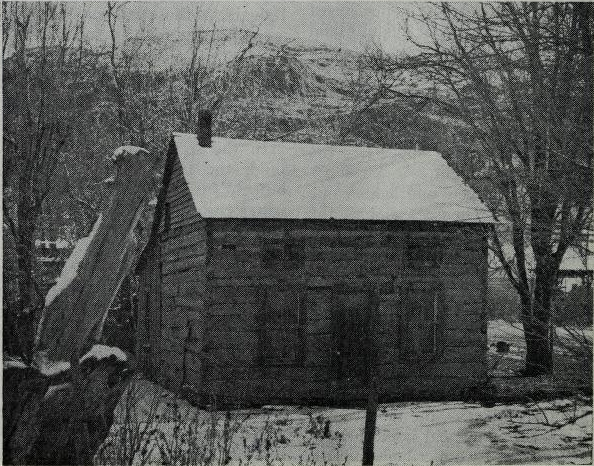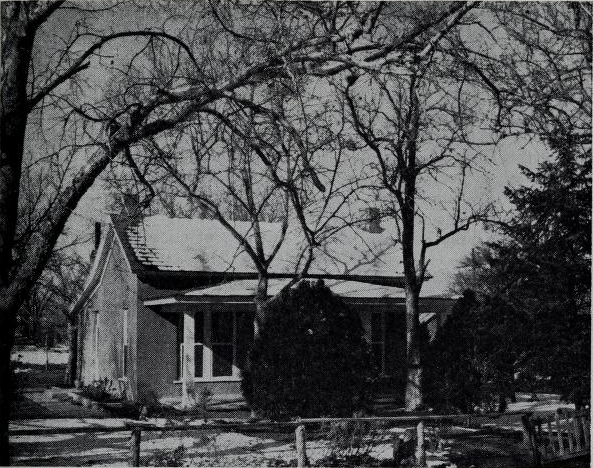EDITOR'S NOTE: "The Lamplighters" was originally published in The Relief Society Magazine March, 1962, vol. 49 pp. 207-210, 1962.
Brigham Young University's Harold B. Lee Library has made digital scans of Relief Society Magazine available online as part of the Relief Society Magazine Digital Project. This article is online there in the original format at:
The article is reprinted here with permission.
It is twilight and the hungry baseball players are straggling home to their evening meal. They had such fun today. There are always all sizes and all ages of home folks out there playing. It doesn't make any difference who comes to play in our friendly little town.
I like to sit here on my front porch because it is in the very center of things, where I can actually listen to the heartbeat of my home town. Tonight I can hear Wickley's cows mooing in the pasture. A cricket chirps in the elderberry bushes, and there is the twittering of sleepy birds in the honey locust tree. Little girls are laughing and flitting like butterflies on Ed Gubler's lawn, and I can hear a dog barking somewhere along the canal bank. Dennis Church is trudging by with his milk bucket. Above the hill, a lone star appears—the first star out tonight.
Twilight deepens and lights come on in the houses along the hillside. I wonder what it was like when the first lamps were lighted in this little valley?
Fancy takes me back, and I see the rabbit brush and the greasewood growing all around me. I can see my own dear mother-in-law polishing her lamp chimney and trimming the wick to light her lamp. Susanna Gubler—the first woman to make a permanent home here in La Verkin. I wonder how she felt. It must have been lonely, but still she was so anxious to move into her own little rock house that she hitched up the team and loaded her belongings into the wagon all by herself, even to her Home Comfort stove. No one knows really how she did it. It took two men to unload it.
A few months later another lamp was lighted in La Verkin, when Aunt Mae Gubler came here to stay. There were others who played a vital part in this drama, who have gone on, leaving their rich heritage and hallowed memories. As I sit here musing, my heart plays strange tricks—I see the beloved faces of those who were here. I pull myself back in my reminiscing and turn my thoughts to those early pioneers who are still living with us today.
After Aunt Mae, came Allen Stout's family in 1902, bringing their daughter Gretchen, who is now lovingly known as Sister Stratton.
In the spring of 1903, Thomas Judd, the founder of La Verkin, brought his family here to live. Still with us is his daughter Kate Thompsen who has been a vital part of our town ever since. That same year William Sanders brought his wife Sarah Amelia. She was expecting a baby when she came. It was that fall that the first child was born in La Verkin—a little girl, Rosalba, to Susanna Gubler. Six days later, Amelia Sanders bore a son, Moroni. Two new little babies born in the wilderness as it were.
As I sit here on my porch musing, I hear water running in at the head of my garden. It has a merry, laughing sound. Water? What did they do for water with which to bathe those new httle babies when Rosalba and Moroni were born? They must have dipped it up from the ditch and settled it. My goodness! And the doctor! I know they didn't phone him—and he didn't rush to their aid in his car, not then, and there was no convenience of a hospital delivery room. I know the answer to that one. Aunt Mae earned the right to be everybody's Aunt Mae, for she was the doctor and the nurse, while this little town was coming into existence. Women had to help each other then.

Once ocupied by the Ben Demille family. [Ed. Note: Photo maybe from the winter of 1961-1962]
Photograph by Carl Laird
IN the early spring of 1905 Arthur Woodbury folded his tent at Shem and brought his wife Harriet and his small children to La Verkin. They say the tent was large, and when it was pitched and boarded up, it became the scene of many happy parties. I know how good those parties must have been. When Aunt Hattie set her mind to any social affair, it had to be good.
From the deep south came the Segler family to join the saints in La Verkin in 1907. With travel so slow, and roads so dusty and rough, I often wonder how Hardy and Jim ever found LaVina and Myrtle. Hardy must have had to go out and around by Short Creek to Mt. Carmel, and Jim's wagon had to creak over the Black Ridge. Courting would have been pretty serious business in those days. But they found their brides and brought them here to help pioneer our little town.
So here they are—our pioneer women who are still living among us today: Susanna Gubler, Aunt Mae Gubler, Amelia Sanders, Gretchen Stratton, Harriet Woodbury, Kate Thompsen, Myrtle Segler, and LaVina Segler.
These are the people who lit their lamps in our valley years ago and helped push back the desert. They are the women behind the men who brought the river through the tunnel, coursing like lifeblood through an artery, to nourish the orchards and vineyards. They are the women who filled the corn shuck and straw ticks that their men might rest come night, and sewed rag rugs to brighten their homes; who bent over the old washboard with aching backs. They are the women who were sustained as auxiliary heads and officers and teachers, shouldering as high as five offices for one person at a time, so that their children might be taught the gospel. They sat in worship in the old bowery, until the little rock schoolhouse came into being.
As I sit here reminiscing, I see the new wing of our church house take the form of that little rock building. It was there that the first little girl and the first little boy learned to read and to write. It was there they learned to love music, drama, and dancing.

This is the only pioneer home in La Verkin which is still occupied. [Ed. Note: As of 1962—Photo maybe from the winter of 1961-1962]
Photograph by Carl Laird
THE sons of the women who lit the first lamps in our valley have gone out to be leaders over the face of this land. Among them are doctors of science, medicine, language, dentists, professors, bakers, star athletes, farmers, engineers, missionaries, bishops, stake clerks, Sunday School superintendents, music directors, and merchants; and their daughters are following their footsteps in leadership. They are the loving wives who light their homes for their men coming home when the sun has gone to rest. Also among them are teachers and skilled career women, too.
This little town is deeply rooted in the love of those who pioneered it. Shoulder to shoulder, they toiled, establishing a bond between them that has never been broken. That is why people say "Those La Verkin people are like one big family." We sit together on summer evenings on the church patio for entertainments. Our women cook food for ward dinners and their families come out and eat together. A breeze rustles the bamboo canes by my house. There are myriads of crickets chirping at the stars. This is my home town, where there is music, and laughter, and love. From all the windows across town shine the lights of these gentle people. I breathe a silent prayer of thanksgiving for those first lamplighters in our valley, for they have surely fulfilled holy writ which says: "Let your light so shine before men, that they may see your good works, and glorify your Father which is in heaven" (Mt. 5:16).